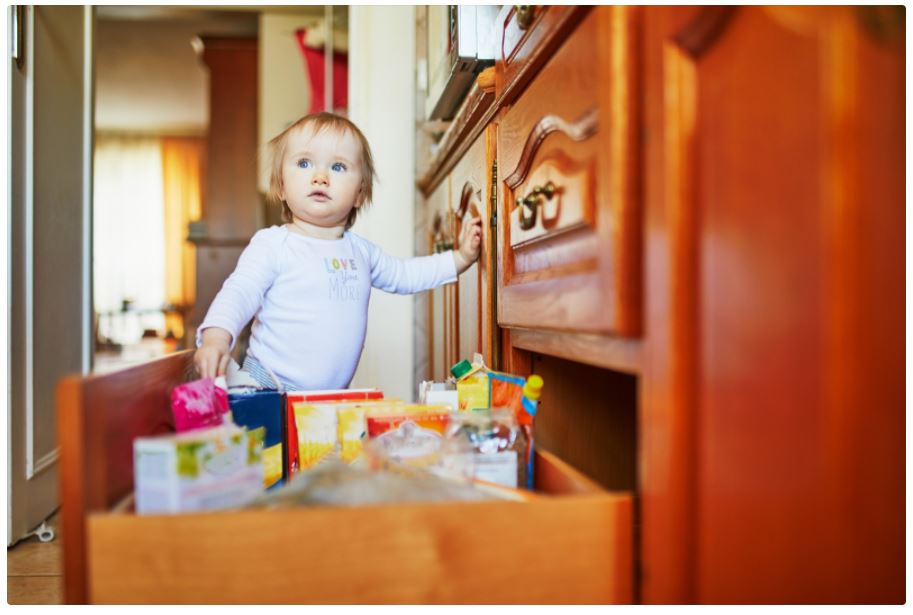
Whether crawling, walking or running, babies and toddlers can’t protect themselves from everyday dangers in your home. Since they’re naturally curious and wobbly, little ones can get hurt by sharp corners, large, unanchored furniture and TVs, tangled in dangling cords, and, not-so-surprisingly, many other seemingly inoffensive household items.
These can result in unexpected – and scary – emergency room visits, but don’t worry, whether this is your first baby or not, you can take steps to avoid these accidents.
Babyproofing your home is the best way to prevent accidental injuries and visits to the emergency room.
Babyproofing Around Your Home
The easiest way to identify potential hazards to your baby or toddler is to get down on their level and have a look around. What is within reach? What can be climbed on and topple over? Are there any cords or outlets that are exposed? Children’s perspectives are much different than ours, so it’s important to see the world from their point of view when babyproofing.
Simply follow our easy, step-by-step instructions below, and you’ll have a safe home that’s ready for even the most rambunctious child!
Babyproofing the Rest of Your House
Hallways, bedrooms and other rooms in your home where kids might be walking or playing are also important to babyproof.
Secure dangling cords from window blinds.
Plug outlet covers into every remaining electrical outlet.
Keep pool, hot tub or jacuzzis covered and locked when not in use.
Get rid of all furniture that can’t be anchored or with sharp corners that can’t be covered.
Anchor wobbly or heavy furniture to a stud in the wall or with a heavy-duty drywall anchor.

Recent Comments